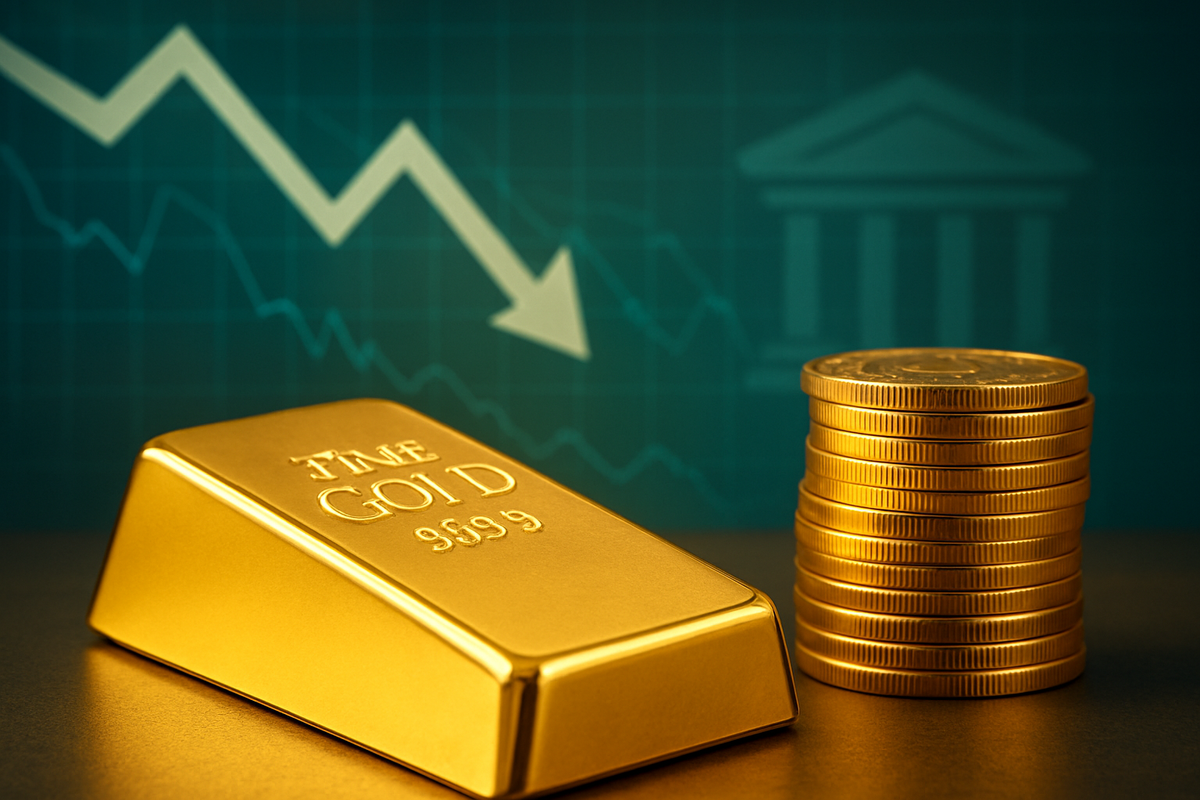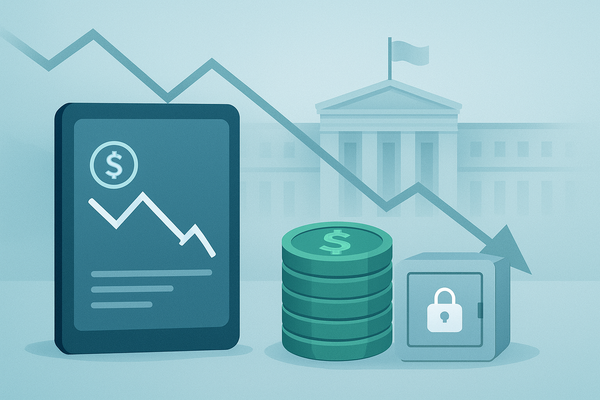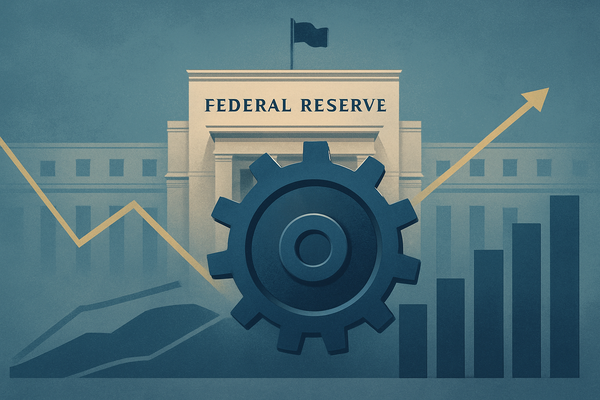Gold's Glimmer Restored: Rate Cut Bets Emerge from Softening US Labor Market

Gold prices have recently experienced a significant rebound, buoyed by a confluence of softer-than-anticipated US jobs data and the subsequent surge in market expectations for imminent interest rate cuts by the Federal Reserve. This renewed optimism has cast a golden glow on the precious metal, traditionally revered as a safe-haven asset, as investors seek refuge from potential economic headwinds and the diminishing allure of interest-bearing alternatives. While the initial rally was robust, a nuanced shift in immediate rate cut probabilities has introduced some short-term volatility, highlighting the market's sensitivity to evolving Fed sentiment.
The immediate implication of this trend is a bolstered appeal for gold, offering investors a hedge against economic uncertainty and a weakening US dollar, which often accompanies a dovish monetary policy stance. The prospect of lower interest rates reduces the opportunity cost of holding non-yielding assets like gold, making it a more attractive store of value. However, the market remains highly reactive to the Federal Reserve's communications and incoming economic data, suggesting that gold's trajectory will continue to be closely tied to the shifting landscape of monetary policy expectations.
The Economic Weathervane: Jobs Data and the Fed's Dilemma
The recent trajectory of gold prices has been intricately linked to a series of economic indicators, particularly those emanating from the US labor market, and the subsequent recalibration of Federal Reserve interest rate expectations. A pivotal moment occurred with the release of softer US jobs data, which served as a primary catalyst for the gold rally. For instance, a private-sector employment report in late October 2025 signaled an unexpected contraction in job figures, raising concerns about the overall health and sustainability of the US labor market. This was further compounded by downward revisions to previously reported job growth estimates for May and June 2025, painting a picture of a cooling economy.
These employment figures are critical because they directly influence the Federal Reserve's monetary policy decisions. Weaker labor market data typically indicates a slowing economy, prompting the Fed to consider a more accommodative stance, primarily through interest rate cuts, to stimulate growth and prevent a deeper downturn. The market quickly priced in a higher probability of such cuts, particularly for the December 2025 Federal Open Market Committee (FOMC) meeting. Initially, expectations for a 25-basis-point rate cut soared, with some analysts anticipating an even more aggressive easing cycle. This dovish pivot from the Fed, or at least the market's expectation of it, significantly reduces the opportunity cost of holding gold, a non-yielding asset, making it more attractive relative to interest-bearing alternatives like Treasury bonds.
However, the narrative has seen a slight recalibration in mid-November 2025. While the underlying sentiment for eventual rate cuts remains, the immediate probability for a December cut has somewhat diminished. This shift was partly influenced by the reopening of the US government, which had previously delayed crucial economic data releases. As markets await clearer signals and more comprehensive economic reports, the certainty of an immediate rate cut has softened, leading to a minor pullback in gold prices. Key players in this scenario include the Federal Reserve itself, whose statements and actions are meticulously scrutinized, as well as institutional investors, hedge funds, and individual traders who react swiftly to shifts in economic data and monetary policy outlooks. Central banks, particularly from emerging economies, have also played a significant role by consistently purchasing gold, providing a robust floor for demand and signaling a broader trend of diversifying reserves amidst global uncertainties.
Companies on the Cusp: Winners and Losers in the Golden Shift
The recent movements in gold prices, driven by evolving interest rate expectations, naturally create a ripple effect across various sectors, particularly impacting companies involved in precious metals. The primary beneficiaries of a sustained gold rally are typically gold mining companies and related exchange-traded funds (ETFs).
Gold mining companies, such as Barrick Gold (NYSE: GOLD) and Newmont Corporation (NYSE: NEM), stand to gain significantly from higher gold prices. A rise in the per-ounce value of gold directly translates to increased revenue and potentially higher profit margins for these miners, assuming their production costs remain relatively stable. Higher gold prices can also make previously uneconomical reserves viable for extraction, potentially expanding their operational scope and future revenue streams. Investors often flock to these stocks as a leveraged play on gold's price movements, anticipating enhanced shareholder returns through dividends or capital appreciation. Furthermore, exploration companies, though often more speculative, could see renewed interest and funding as the broader sentiment towards gold improves.
Conversely, companies that might face headwinds or see reduced interest are those whose business models are inversely correlated with gold's appeal or those that thrive in a higher interest rate environment. For instance, financial institutions heavily invested in fixed-income assets might see some rebalancing as investors shift towards safe-haven commodities. While not directly "losers," companies that benefit from a strong US dollar might experience some pressure if the dollar weakens in response to rate cuts, making their international earnings less valuable when converted back to USD. However, the direct impact on most non-mining public companies is often indirect, primarily through broader market sentiment and shifts in investor portfolios. Precious metals streaming and royalty companies, like Franco-Nevada Corporation (NYSE: FNV), also stand to benefit as they receive a percentage of production or revenue from mining operations, amplifying their gains during periods of rising gold prices. Investment vehicles specifically designed to track gold prices, such as the SPDR Gold Shares (NYSEARCA: GLD) ETF, also see increased inflows and asset values, offering retail and institutional investors direct exposure to the metal's performance without physical ownership.
Broader Implications: Gold's Role in a Shifting Economic Landscape
The recent gold price rebound, stemming from softer US jobs data and the anticipation of Federal Reserve interest rate cuts, is more than just a fleeting market event; it signals a potentially significant shift in broader economic and investment paradigms. This event fits squarely into the long-standing trend of gold acting as a counter-cyclical asset, thriving during periods of economic uncertainty and monetary easing.
Historically, gold has served as a reliable hedge against inflation and currency debasement, and its recent performance reaffirms this role. In an environment where central banks, including the Federal Reserve, are contemplating or enacting rate cuts, the real yield on conventional bonds tends to decrease. This makes non-yielding assets like gold comparatively more attractive, as the opportunity cost of holding them diminishes. This dynamic is particularly potent when coupled with concerns about fiscal stability and the potential for increased government spending, which can further erode currency value over time.
The ripple effects of this trend extend beyond just gold. Other precious metals, such as silver, platinum, and palladium, often move in tandem with gold, albeit with their own unique industrial demand dynamics. Silver, in particular, is frequently seen as "poor man's gold" and tends to benefit from similar drivers. A sustained rally in gold could therefore pull up the entire precious metals complex, impacting companies involved in their mining, refining, and trading.
Regulatory or policy implications might arise if a prolonged period of low interest rates and high gold prices leads to renewed calls for closer scrutiny of monetary policy or even discussions around alternative reserve assets. While unlikely to trigger immediate policy changes, a sustained shift in investor preference towards gold could influence long-term financial planning and asset allocation strategies for institutions and sovereign wealth funds. Looking back at historical precedents, periods of significant economic slowdowns or financial crises, such as the 2008 financial crisis or the early 2000s dot-com bust, often saw gold prices surge as investors sought safety. The current environment, while distinct, shares similarities in the market's response to perceived economic fragility and the potential for central bank intervention. Central bank gold purchases, particularly from emerging markets seeking to diversify away from the US dollar, also represent a significant and ongoing trend that provides a strong underlying demand for the metal, further cementing its role as a strategic reserve asset.
The Road Ahead: Navigating Gold's Future Trajectory
The path forward for gold prices will largely depend on the evolving interplay between economic data, the Federal Reserve's monetary policy decisions, and broader geopolitical developments. In the short term, market participants will be keenly watching upcoming US economic reports, especially further labor market data and inflation figures, for clearer signals regarding the Fed's next move. Any data that strongly supports a sustained economic slowdown could solidify expectations for rate cuts, providing a fresh impetus for gold's rally. Conversely, surprisingly resilient economic data could temper these expectations, leading to further short-term corrections.
Potential strategic pivots for investors and institutions might involve increasing their allocation to gold and gold-related assets as a portfolio diversifier and a hedge against economic uncertainty. For gold mining companies, a sustained period of higher prices could encourage increased exploration and development activities, potentially leading to higher production volumes in the long run. However, they must also remain vigilant about managing operational costs and capital expenditures to maximize profitability.
Looking at the long term, if the global economic environment continues to be characterized by elevated debt levels, geopolitical tensions, and ongoing debates about central bank independence and currency stability, gold's appeal as a store of value is likely to endure. Potential scenarios include a gradual easing cycle by the Fed, which would provide a steady tailwind for gold, or a more aggressive series of cuts if economic conditions deteriorate sharply. In a more extreme scenario of significant global economic turbulence, gold could see a dramatic surge as a primary safe-haven asset. Conversely, a robust and sustained global economic recovery, coupled with a hawkish shift from major central banks, could present challenges to gold's upward momentum. However, given the current macroeconomic backdrop, the balance of probabilities seems to favor continued, albeit potentially volatile, support for gold prices.
Golden Horizons: A Summary of Key Takeaways and Future Watchpoints
The recent rebound in gold prices underscores the precious metal's enduring role as a critical safe-haven asset, particularly during periods of economic uncertainty and shifting monetary policy. The catalyst for this resurgence has been the confluence of softer US jobs data, which has fueled market expectations of interest rate cuts by the Federal Reserve. This dynamic reduces the opportunity cost of holding non-yielding gold and tends to weaken the US dollar, making gold more attractive to international buyers. While a recent slight tempering of immediate rate cut expectations has introduced some short-term volatility, the underlying narrative supporting gold's appeal remains robust.
Moving forward, the market will remain highly attuned to the Federal Reserve's communications and the stream of incoming economic data. Key takeaways include the strong inverse relationship between a weakening labor market and gold's appeal, the significant influence of interest rate expectations on investor sentiment, and gold's consistent performance as a hedge against broader economic risks. Companies within the gold mining sector, such as Barrick Gold (NYSE: GOLD) and Newmont Corporation (NYSE: NEM), along with gold-backed ETFs like SPDR Gold Shares (NYSEARCA: GLD), are positioned to benefit from a sustained upward trend in gold prices.
Investors should watch for several key indicators in the coming months: the Federal Reserve's official statements and projections regarding interest rates, further US jobs reports and inflation data, and any significant geopolitical developments that could heighten global uncertainty. The trajectory of the US dollar will also be a crucial factor, as a weaker dollar typically provides a tailwind for gold. Ultimately, gold's recent performance serves as a powerful reminder of its intrinsic value as a portfolio diversifier and a protector of wealth in an ever-evolving and often unpredictable financial landscape.
This content is intended for informational purposes only and is not financial advice



